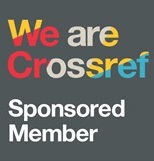Pelatihan Pembelajaran Klinik Terintegrasi dengan Menggunakan Modul yang Berbasis Pendekatan Symptom pada Preceptor di Puskesmas
DOI:
https://doi.org/10.36277/abdimasuniversal.v3i2.137Keywords:
preceptor, public healthcare, symptom approachAbstract
Primary healthcare is one of the vehicles in learning for students of the medical profession. The preceptor clinic in primary healthcare is expected to guide and direct students studying there so that it can be effective. Integrated learning in all fields of medical science that is applied is expected to prepare medical graduates who are ready to enter the community. The symptom and sign approach is considered one of the effective methods in learning primary healthcare. Therefore, we intend to provide integrated clinical learning training using a module based on the symptom approach at primary healthcare. This community service involves ten primary healthcare located in the Boyolali and Klaten areas. The activity begins with exploring the problems that exist when guiding students of the medical profession who study primary healthcare. Then proceed with introducing guidance methods using clinical learning guides with a sign and symptom approach and ends with training evaluations. The participants of this activity received this training and provided some input regarding the existing modules. Suggestions from the primary healthcare preceptors were used as input to improve the modules that had been prepared.
Downloads
References
Bates, J., & Ellaway, R. H. (2016). Mapping the dark matter of context: a conceptual scoping review. Medical Education, 50(8), 807–816. https://doi.org/10.1111/medu.13034
Brown, M. EL, Anderson, K., & Finn, G. M. (2019). A Narrative Literature Review Considering the Development and Implementation of Longitudinal Integrated Clerkships, Including a Practical Guide for Application. Journal of Medical Education and Curricular Development, 6, 238212051984940. https://doi.org/10.1177/238212051984940
Burgess, A., & Mellis, C. (2015). Feedback and assessment for clinical placements: Achieving the right balance. Advances in Medical Education and Practice, 6, 373–381. https://doi.org/10.2147/AMEP.S77890
Buterakos, R. M., & Keiser, M. (2021). Scaffolding Role Development and Clinical Reasoning for Online AG-ACNP Students. Journal for Nurse Practitioners, 17(5), 615–618. https://doi.org/10.1016/j.nurpra.2020.12.031
Hays, R. (2013). Integration in medical education: What do we mean? Education for Primary Care, 24(3), 151–152. https://doi.org/10.1080/14739879.2013.11494358
Irmawati, S. (2017). Kualitas Pelayanan Kesehatan Di Puskesmas Sangurara Kecamatan Tatanga Kota Palu. Katalogis, 5(1), 188–197.
Laili, I. (2019). Efektivitas Pengembangan E-Modul Project Based Learning Pada Mata Pelajaran Instalasi. Jurnal Imiah Pendidikan Dan Pembelajaran, 3, 306–315. https://ejournal.undiksha.ac.id/index.php/JIPP/article/download/21840/13513
Mulyo, Harminto, Khalimatus Sa’diyah, Dwi Noviyani, Anita Ameliya, Rohmatun Nikmah, and Aufa Maulana Hidayat. 2021. “Pelatihan Pembuatan Media Pembelajaran ‘Karpet Ajaib’ Untuk Meningkatkan Keterampilan Guru Di MI Al-Islam Krasak Jepara.” ABDIMAS UNIVERSAL 3(1):67–72.
Norman, G. (2005). Research in clinical reasoning: Past history and current trends. Medical Education, 39(4), 418–427. https://doi.org/10.1111/j.1365-2929.2005.02127.x
Poncelet, A., Bokser, S., Calton, B., Hauer, K. E., Kirsch, H., Jones, T., Lai, C. J., Mazotti, L., Shore, W., Teherani, A., Tong, L., Wamsley, M., & Robertson, P. (2011). Development of a longitudinal integrated clerkship at an academic medical center. Medical Education Online, 16(1). https://doi.org/10.3402/meo.v16i0.5939
Suharmiati Suharmiati; Handayani, Lestari; Kristiana, L. (2013). Faktor-Faktor yang Memengaruhi Keterjangkauan Pelayanan Kesehatan di Puskesmas Daerah Terpencil Perbatasan di Kabupaten Sambas (Studi Kasus di Puskesmas Sajingan Besar). Buletin Penelitian Sistem Kesehatan, 15(3), 223–231. https://doi.org/10.22435/bpsk.v15i3Jul.2996
Teherani, A., Irby, D. M., & Loeser, H. (2013). Outcomes of different clerkship models: Longitudinal integrated, hybrid, and block. Academic Medicine, 88(1), 35–43. https://doi.org/10.1097/ACM.0b013e318276ca9b
Thistlethwaite, J. E., Bartle, E., Chong, A. A. L., Dick, M. L., King, D., Mahoney, S., Papinczak, T., & Tucker, G. (2013). A review of longitudinal community and hospital placements in medical education: BEME Guide No. 26. Medical Teacher, 35(8), 142–159. https://doi.org/10.3109/0142159X.2013.806981





















